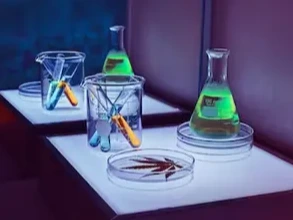Organic synthesis is the tool for the preparation of small molecules with interesting biological and medicinal properties—new compounds with activity against diseases affecting humankind today such as cancer, metabolic disorders, neurodegenerative disorders or infectious diseases, as well as new syntheses of known drugs. New bioactive compounds are designed and synthesized to target key metabolic reactions in pathological processes as the first steps toward drug discovery. The crosstalk between synthetic and medicinal chemists enable a high impact of new synthetic methodologies in drug discovery. The aim is to highlight the role that organic synthesis plays in developing methods that may be exploited for finding lead compounds and drugs by the pharmaceutical industry.
- 1.4K
- 10 Feb 2022
- 3.6K
- 10 Feb 2022
- 1.3K
- 07 Feb 2022
- 1.5K
- 28 Jan 2022
- 3.5K
- 27 Jan 2022
- 2.4K
- 19 Jan 2022
- 1.0K
- 19 Jan 2022
- 1.7K
- 17 Jan 2022
- 4.0K
- 13 Jan 2022
- 4.3K
- 12 Jan 2022

